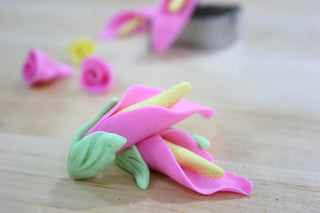From colouring fondant flowers a pretty pink through to giving cake decorating icing a vibrant green glow, food colouring can be used for a variety of purposes. If you’re thinking about making fondant decorations or need to colour your vanilla cake icing a certain shade, you’ll need to visit a cake decorating supplies store and purchase some edible food colour or ready-to-roll colour fondant icing.
Given that there are quite a few different products available, there are many questions that can arise when it comes to food colouring. This article will answer some of the more common questions to help you make a more informed decision when it comes time to visit food colour suppliers.
Due to the fact that whatever you’re wanting to colour will likely be consumed, it’s reasonable to want to know what exactly food colouring is made out of. The ingredients found in food colouring can vary, but they often include natural colours that are derived mainly from vegetable sources, inorganic pigments, combinations of metallic and organic compounds, and water. Food colour ingredients have to meet strict regulations and have been deemed safe for human consumption by various food safety boards in the USA and Europe.
Colouring icing is very straightforward and can be done by simply adding a few drops of food colouring into your icing or frosting. Once you’ve added the food colour, you can mix it in and, if necessary, add another drop or two until you achieve the shade you desire.
For dough or fondant icing colour, a similar approach is taken. Add a few drops of colour, roll it into a ball and knead the colour in until it is evenly blended. This simple approach will ensure that your dough and fondant icing will look exactly how you want it to.
The main difference between regular liquid food colour and gel food colouring is that the latter is more concentrated, so less is required to achieve the desired colour. This can be useful when you don’t want to add more liquid than necessary to a recipe, such as when you don’t want to thin out your icing too much. This is also a more resource-efficient solution, minimising the amount of product you need to buy and consume in order to achieve your desired outcome.
Gel paste food colouring is used in the same way as liquid food colouring. Simply add it to what you wish to colour and mix it in until the desired shade is achieved. However, be aware that gel food colouring is more concentrated, so you won’t have to use as much of it for adding icing colour. This has the added benefit of reducing the number of times you need to purchase more gel food colouring, making it a cost-effective solution.
If you’re looking for food colour suppliers that stock coloured icing, gel paste food colouring, fondant flowers and other cake decorating supplies, look no further than Hot Stuff Bakeware. Browse our edible products range online today.
Given that there are quite a few different products available, there are many questions that can arise when it comes to food colouring. This article will answer some of the more common questions to help you make a more informed decision when it comes time to visit food colour suppliers.
What is Food Colouring Made Of?
Due to the fact that whatever you’re wanting to colour will likely be consumed, it’s reasonable to want to know what exactly food colouring is made out of. The ingredients found in food colouring can vary, but they often include natural colours that are derived mainly from vegetable sources, inorganic pigments, combinations of metallic and organic compounds, and water. Food colour ingredients have to meet strict regulations and have been deemed safe for human consumption by various food safety boards in the USA and Europe.
How Do You Colour Icing and Dough?
Colouring icing is very straightforward and can be done by simply adding a few drops of food colouring into your icing or frosting. Once you’ve added the food colour, you can mix it in and, if necessary, add another drop or two until you achieve the shade you desire.
For dough or fondant icing colour, a similar approach is taken. Add a few drops of colour, roll it into a ball and knead the colour in until it is evenly blended. This simple approach will ensure that your dough and fondant icing will look exactly how you want it to.
What’s the Difference between Gel Food Colouring and Regular Food Colouring?
The main difference between regular liquid food colour and gel food colouring is that the latter is more concentrated, so less is required to achieve the desired colour. This can be useful when you don’t want to add more liquid than necessary to a recipe, such as when you don’t want to thin out your icing too much. This is also a more resource-efficient solution, minimising the amount of product you need to buy and consume in order to achieve your desired outcome.
How Do You Use Gel Food Colouring?
Gel paste food colouring is used in the same way as liquid food colouring. Simply add it to what you wish to colour and mix it in until the desired shade is achieved. However, be aware that gel food colouring is more concentrated, so you won’t have to use as much of it for adding icing colour. This has the added benefit of reducing the number of times you need to purchase more gel food colouring, making it a cost-effective solution.
Stock Up On Food Colouring Products Today
If you’re looking for food colour suppliers that stock coloured icing, gel paste food colouring, fondant flowers and other cake decorating supplies, look no further than Hot Stuff Bakeware. Browse our edible products range online today.

